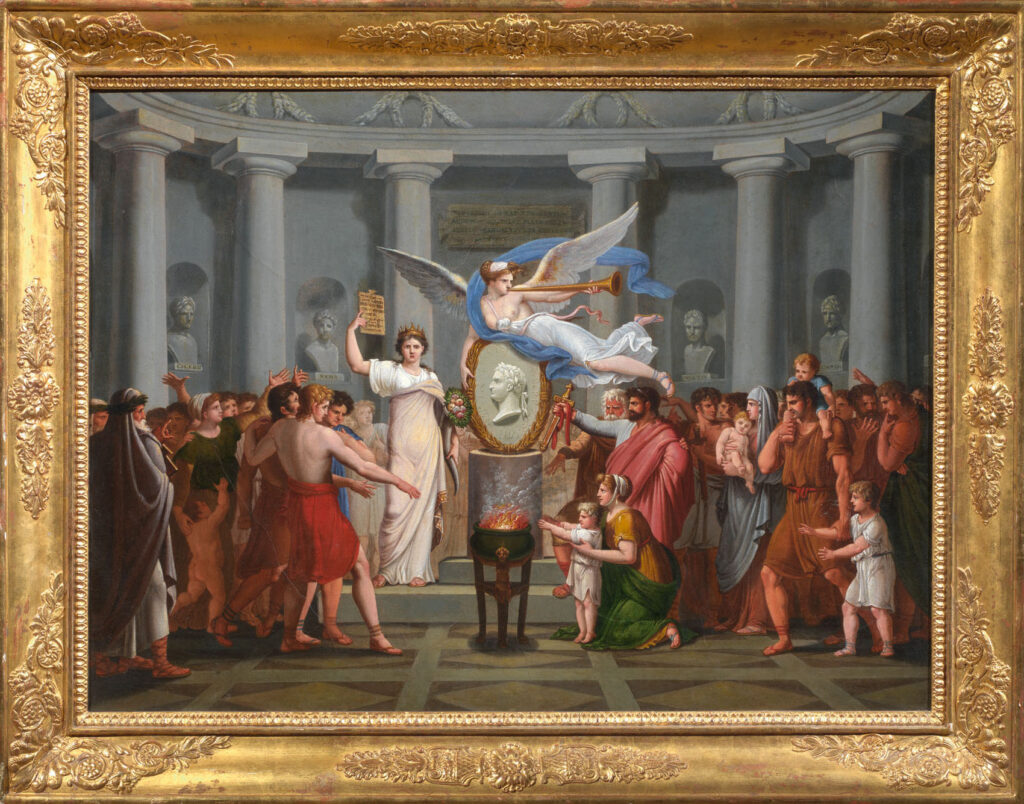RAFFAELE MATTIOLI
Naples, 1775 – 1822
The oath of the people to the Sovereign and the Law
oil on paper transferred to canvas, cm 46×63,5
dated: 1811-1813
Inscriptions: “VES[…] R.P.PP. COS. VIII. IMP. T. CA[…]S.” on the marble in the centre of the scene.
“QUAM. IOACHINO. NAP. REG. FORTISS. AEDEM. MORTALIT. PARTENOPE. ADDIXIT. CAROLINA. UXOR. SAPIENTI[…]. AR. SUFF[…]” on the plaque in the centre of exedra.
“CICERO NUMA CATO CORN. TAC” on the busts.
This preparatory painting for a large canvas commissioned by the king of Naples, Joachim Murat, is a sort of political and ideal manifesto with a clear celebratory and ideological function. According to the contemporary description by the president of the Reale Accademia di Belle Arti in Naples, the work illustrates “the action of a people swearing loyalty to their Sovereign and to the Laws”. With respect to the monumental final painting, put on display by the ruler in the Royal Palace, in the first antechamber of the Throne Room, this preparatory model features some notable differences, and it is therefore of extraordinary interest for reconstructing its creation. For example, the face of Emperor Vespasian, depicted in our sketch in the clipeus held by the winged figure of Fame, was replaced with the face of Francis I of Bourbon for political reasons.
The scene unfolds within a semicircle with columns adorned with herms of great figures from ancient Rome, such as Cicero, Numa Pompilius, Cato and Tacitus, whose biographies are characterised by intense political activity. At the centre of the scene, around which the subjects are gathered with resolute firmness, are the burning brazier and the aforementioned clipeus supported by Fame. The crowned allegorical figure, representing the Law, who holds aloft a tablet inscribed with the names of Murat and his wife Caroline, also plays a very important role.
The publication by Giovanni Capitelli reconstructs full details of the commission of the imposing painting from Mattioli, who was appointed honorary professor of the academy in 1822. The final piece is currently in the storerooms of the Museo di Capodimonte.
Publications:
“Quadreria 2009. Dalla bizzarria al canone: dipinti tra Seicento e Ottocento”, exhibition catalogue edited by Giovanna Capitelli, Carlo Virgilio & C., Rome, 2009, no. 17, pp. 48-49.


